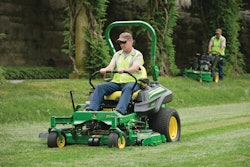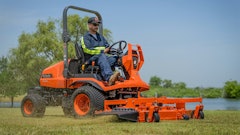To listen to the associated podcast, click here.
The right person to place into a position of responsibility in your business is out there, but given the current challenges of the labor market, your ability to attract them is limited. The right person for a self-managed business needs to be grown internally.
The following is an overview of the three things you need (and develop within yourself):
1. Technical Skills
The specific knowledge and skills of the business (landscaping, design build, turf, etc.). If you are developing a technician for a management position, they need to understand all facets of the job to climb the first rung of the ladder. As they move up the organization the need for technical skills decrease.
2. People Skills
This can be a real trap for new managers. We usually promote people for their technical skills and should - can’t have incompetents in charge, however that doesn’t mean they can deal with people. Make sure you promote or hire for a blend of adequate technical skills and good people skills. It is smarter to promote a decent technician with people skills than the reverse.
3. Conceptual Skills
This is not an issue for recently promoted managers. However, if you are looking for someone to move higher in the company - make it a factor. These skills include seeing the big picture, ability to solve complex problems, work as a management team, and an understanding of how to impact the business.
The other organizational demands are on the following two personal attributes:
1. Self Management
If your new manager cannot manage their time, they cannot manage the flow of work and will be at the mercy of events. This is beyond time management. It is the ability to create a daily and weekly schedule that maximizes the use of resources to realistically service the most customers. Eighty percent of your gross margin is the result of effective scheduling.
2. Working Under Pressure
Most management positions can be characterized by performing a great quantity of work at an unrelenting pace. Also it has high variety and very fragmented in short bursts. Part of this is a self-management issue (control what you can control) and the other is understanding you must deal with the uncontrollable and keep your composure.
OK, we laid out what attributes and skills you need for success, the next step is determining how to develop future managers. By the way, the following is a great recruiting tool: What does a career in landscaping look like?
Start with creating several new job titles. Assuming you use the first 90 days as a probationary period, create a Technician 2-level position. This is a recent hire, and the focus is on learning a single skill or task. Once they have mastered the job, use them in other technical parts of the business until they have learned all the jobs. This is accompanied with a promotion to Technician 1 and a pay raise. You now have a candidate for assistant crew leader.
Do the same with your first-line supervisor role—create 2 levels, crew and assistant crew leader. One role of the crew leader is to create a replacement by training the assistant to manage the flow of work and leading people. Your development of crew leaders is the same cross-training as the assistant except in a leadership position. Although you are developing management skills in the assistant, the crew leader should be considered a manager in training.
These crew leaders become the seed corn for growth. Whether the position is in operations or the back office, you have somebody that displayed their management chops and the right choice will be obvious.
Supervisors into Managers
The next article will pick up here and focus on how to turn supervisors into managers that help you build a self-managing business.



















